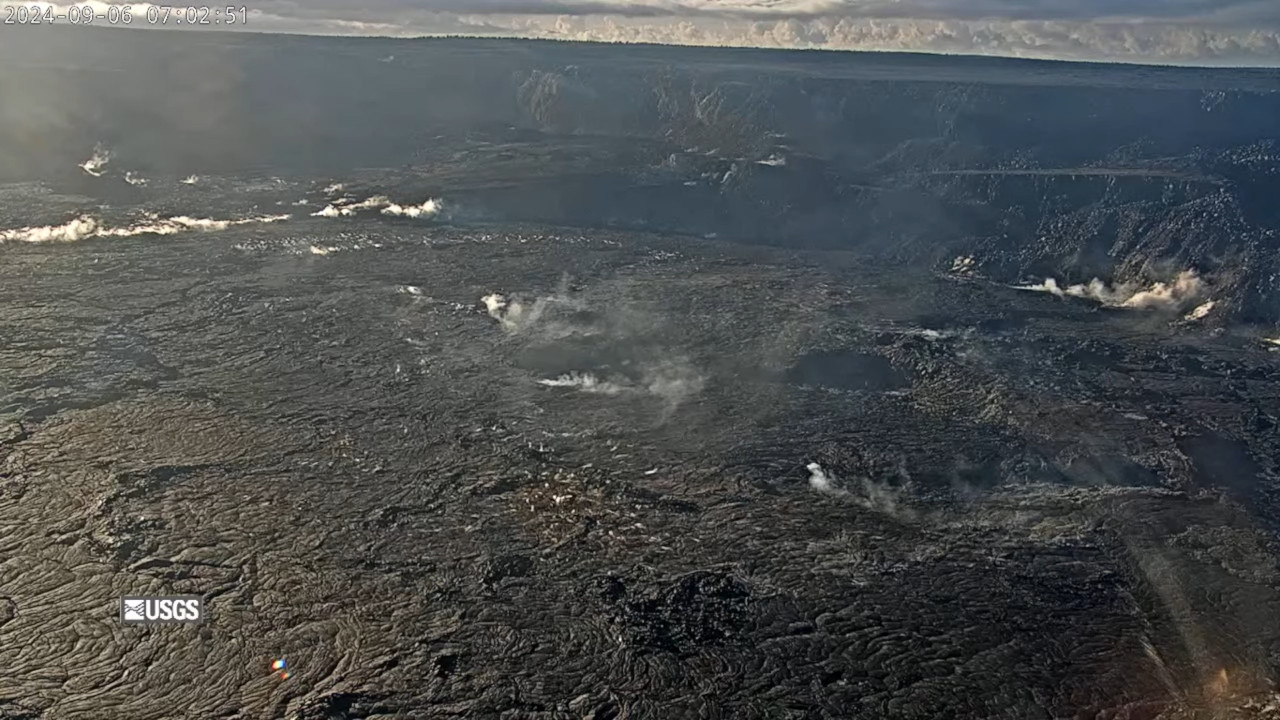(BIVN) – Kīlauea is not erupting and the USGS Volcano Alert Level is at ADVISORY.
Earthquake activity remains elevated in Kīlauea’s upper East Rift Zone (UERZ). On Friday, the number of recorded earthquakes is on pace to potentially be the highest in a week.
There are no signs of imminent eruption at this time, scientists say, although “changes in the character and location of unrest can occur quickly, as can the potential for eruption”, they add.
In a weekly Volcano Activity Update published on Thursday, the USGS Hawaiian Volcano Observatory wrote:
Over the past week, about 450 earthquakes were detected beneath Kīlauea’s upper East Rift Zone and about 110 events were detected between Maunaulu and Puʻuʻōʻō in the middle portion of the East Rift Zone within Hawaiʻi Volcanoes National Park. Over the past week, Kīlauea’s summit continued to show overall slow inflation with relatively little ground deformation recorded in the upper-to-middle East Rift Zone regions.
There are no significant changes in activity in the lower East Rift Zone and Southwest Rift Zone, scientists report.
UPDATE – (4 p.m.) – From the USGS Hawaiian Volcano Observatory on Friday:
Summit Observations: Approximately 43 earthquakes were detected beneath Kaluapele (Kīlauea’s summit caldera) over the past 24 hours at depths of 1–3 km (0.6–1.9 mi) below the ground surface, most with magnitudes of less than M2.0. Rates of deformation at the summit remained relatively low, with slightly fluctuating tilt at summit tiltmeters over the past day. An overall gradual inflationary trend has been measured by GPS instruments around the summit region in recent months. The most recent measurement of the summit’s SO2 emission rate was approximately 75 tonnes per day on August 20, 2024.
Rift Zone Observations: Over the past 24 hours, there have been approximately 95 earthquakes beneath Kīlauea’s UERZ region, extending from Puhimau Crater southeast to Maunaulu, an increase from yesterday. Most earthquakes have been smaller than M2.0. Events have remained at depths of 1–3 km (0.6–1.8 miles) beneath the surface. Currently, deformation remains stable over the past 24 hours.
Activity in the middle East Rift Zone (MERZ) remains low. There were no significant changes in the POC tiltmeter over the past day. GPS instruments have recorded overall inflation in the region over the past month.
Measurements from continuous gas monitoring stations downwind of Puʻuʻōʻō in the middle East Rift Zone—the site of 1983–2018 eruptive activity—remain below detection limits for SO2, indicating that SO2 emissions from this area are negligible.
At this time, there is no evidence of elevated seismicity or ground deformation beneath the lower East Rift Zone, and Southwest Rift Zone activity remains low. Current activity is restricted to the summit and upper East Rift Zone region.
Analysis: Recent UERZ unrest may represent pulses of magma being supplied to the UERZ. An intrusive event occurred near Pauahi Crater over July 22–25, 2024, and another intrusive event happened near the same vicinity on August 20, 2024. Currently, the MERZ has not shown signs of increased unrest; however, magma has recently re-established a path to Kīlauea’s MERZ. Unrest could potentially extend to the MERZ with continued magma supply.


by Big Island Video News7:14 am
on at
STORY SUMMARY
HAWAIʻI VOLCANOES NATIONAL PARK - Earthquake activity remains elevated in Kīlauea’s upper East Rift Zone, scientists report.